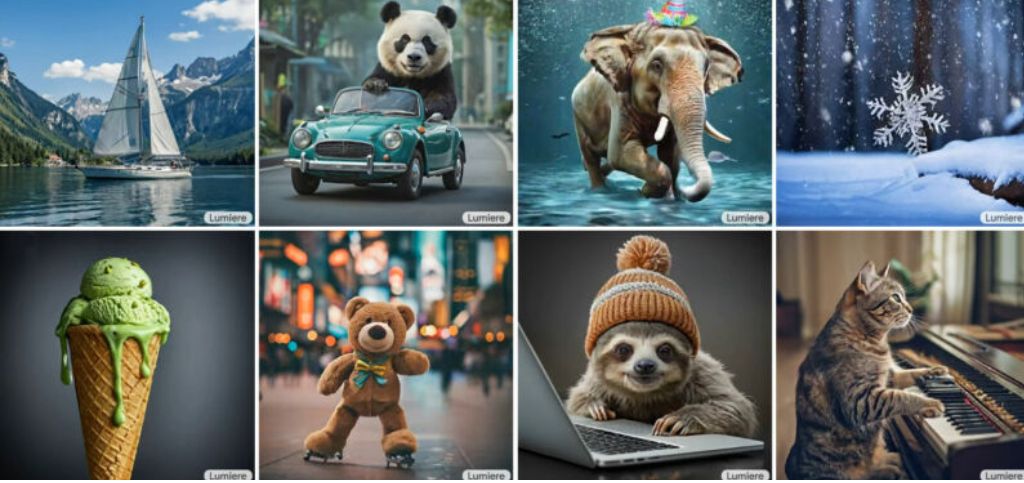
Google has recently introduced Lumiere, a cutting-edge multimodal AI video model designed to revolutionize the way we create videos. Unlike conventional text-to-video models, Lumiere goes beyond simple functionality, offering users the ability to generate realistic and diverse motion in videos from both text and images.
At the core of Lumiere is its unique text-to-video and image-to-video synthesis capabilities. Users can input text or images, and the AI neural networks within Lumiere translate this input into dynamic, coherent videos. This tool takes video generation to the next level, allowing users to animate existing images and create videos in the style of input images or paintings. Additionally, Lumiere enables video painting and the creation of specific animations within different sections of an image.
The underlying technology of Lumiere is detailed in Google’s research paper titled ‘Lumiere: A Space-Time Diffusion Model for Video Generation.’ The abstract introduces Lumiere as a text-to-video diffusion model that addresses the challenge of synthesizing videos with realistic, diverse, and coherent motion. The innovation lies in the Space-Time Diffusion model, a groundbreaking approach that generates the entire temporal duration of the video at once. This is a departure from existing AI video models that synthesize distant key frames one at a time.
The key advantage of Lumiere is its global temporal consistency, ensuring a coherent representation across different frames. The research paper demonstrates Lumiere’s capabilities through various examples. The text-to-video results showcase promising consistency and accuracy in portraying diverse scenes, while image-to-video transformations exhibit impressive animations. Furthermore, the model’s stylized generation using reference images produces visually appealing and coherent results.
The researchers have incorporated a pre-trained text-to-image diffusion framework for text-to-video generation. Recognizing the limitations of existing methods in achieving globally coherent motion, the team introduced a Space-Time U-Net architecture. This architecture generates full-frame-rate video clips in a single pass, incorporating spatial and temporal modules. Lumiere’s approach outperforms existing methods in image-to-video, video inpainting, and stylized generation.
In conclusion, while Lumiere exhibits groundbreaking capabilities, the research team acknowledges its limitations and encourages future exploration in this direction. Despite relying on pixel-space Text-to-Image models, the design principles of Lumiere have the potential to inspire advancements in latent video diffusion models. Google’s Lumiere marks a significant step forward in AI-driven video synthesis, opening up new possibilities for realistic and coherent motion in multimedia content creation.
Staff writers are professional writer, editor, and SEO specialist from india. They are a contributor to digimac media.
